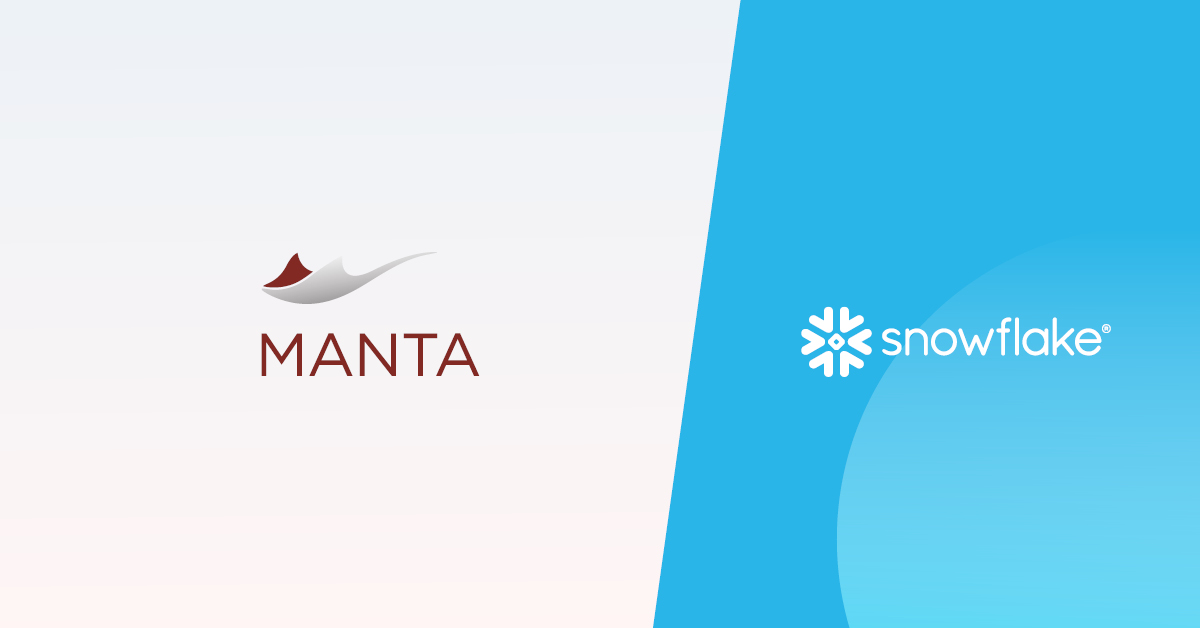
Analysts can agree on one thing: it’s critical to turn your data into actionable intelligence. And adopting Snowflake in the cloud is a great way to do it. But there’s a critical metadata part, that you should understand first. Let’s see how you can acquire data lineage in Snowflake.
Why Care About Metadata Automation
Teams that automate metadata to derive data lineage for a deeper contextual understanding of their data flows:
- gain market share
- boost business agility
- mitigate risk
- limit exposure to market volatility with improved decision making
The cloud presents excellent infrastructure and capabilities to support analytics in delivering on those business expectations. Cloud data platforms can securely house and scale enterprise data processes without complicating access to the data you need when you need it.
Cloud architectures provide companies with almost unlimited computing power, allowing companies to take on their most resource-intensive data projects.
Quick Detour: What is Snowflake?
Snowflake is a cloud-computing-based integrated data warehousing solution. The platform can be run on Amazon S3, Microsoft Azure, and the Google Cloud Platform.

Snowflake offers enterprises features such as data warehouses, data marts, and data lakes, presented in a user-friendly interface with a single source of reliable data for the entire organization.
What You Don’t Know Can Hurt You
Migrating from legacy systems or simply adding a new data source to any cloud platform becomes complex without visibility across all data flows to guide the process.

Lineage automation can help you gain visibility and avoid the dangers of not knowing by illustrating exactly which data gets used, how it gets used, where it comes from, and how it transforms as it flows across systems.
Gain Greater Data Flow Visibility with Lineage
Keeping track of all the data flows feeding into Snowflake from different sources is a challenge. The need to manually evaluate data integrity, ensure quality and uncompromising security, and perform impact analyses to avoid issues across all data sets, reports, and semantics can be overwhelming.
Automating lineage gathering for data assets moving to Snowflake can alleviate the biggest pain points of the transition and boost the business outcomes and migration benefits.

By implementing MANTA within Snowflake, users can maximize data ROI and shorten the value delivery cycle that takes raw data analytics and outputs actionable business intelligence.
That’s why we have decided to help everyone answer three major questions.
- How do I migrate to Snowflake with the help of data lineage?
- Why augment Snowflake with data lineage?
- How do I optimize data pipelines to speed up data delivery?
How Do I Migrate to Snowflake with the Help of Data Lineage?
Snowflake provides a single source of truth that works well to eliminate data silos across teams, specifically between technical and business users. When everyone is looking at the same data, it’s easier to align stakeholders and democratize data access to empower your company to use data-driven decision-making insights.
When migrating to the cloud, you’ll need to work with many moving parts—databases, tables, views, ETL processes, and reports.
And keeping track of all of them by hand is a losing battle. Something will inevitably get left out of the transition, or assets that no one uses and are prime for retirement will get migrated, adding an unnecessary expense and weeks of wasted time.
By mapping the data inventory with lineage, users gain clarity on what is being used and should be migrated and what should be retired.
Why Augment Snowflake with Data Lineage?
Enterprises that automate metadata management and lineage mapping benefit from improved business outcomes across key areas, including:
1) Agile Data Workflows
Lineage gives data teams a comprehensive overview of all data flows, making it easier to identify and locate data assets as well as boost workflow efficiency and productivity while reducing the amount of time spent searching for, verifying, and requesting permissions to access data. MANTA provides data users with a comprehensive visual map of their data.
MANTA can connect to the Snowflake database to automatically read Snowflake metadata and output a detailed lineage map to help users understand where data is flowing from, which transformations happen in Snowflake, and how everything is impacted downstream.
2) Enhanced Trust in Data
With automated lineage data, teams can retrace the data lineage to confirm the accuracy and integrity of data in reporting or analytics while citing the supporting documentation to ensure teams feel confident acting on results on particular data analytics.
In addition to people and processes, technology that reinforces data trust and reliability helps maintain healthy data governance in the cloud.
Lineage can support several areas of governance, including establishing documentation and protocols for what data to collect and how to format metadata and data models for the assets collected. Lineage makes it easier to spot outliers and correct data attributes before they trickle down and impact something downstream.
3) Achieve and Maintain Regulatory Compliance
Automating lineage helps enterprises in heavily-regulated industries like Finance and Healthcare comply with regulations such as BCBS239, GDPR, and CCPA by illustrating how data flows through various systems from source to destination; how PII (personally identifiable information) is protected, encrypted, and masked; and where it is stored in the system.
How Do I Optimize Data Pipelines to Speed Up Data Delivery?
The Snowflake Platform has been built to optimize speed and performance. By separating compute from storage and offering zero-copy cloning, Snowflake has become the first data platform to truly provide the underlying infrastructure to empower DataOps teams to deliver the same value that DevOps has provided for application development in the context of agility, maintainability, security, and governance.
With streamlined data pipelines, teams see fewer errors and less broken reporting. Still, when it does happen, with automated lineage, tracking down the error is a streamlined process. Having automated lineage can reduce deployment and configuration bottlenecks and bugs so technical teams can shift their focus from speeding up delivery and the accuracy of data-driven insights to the business rather than maintaining infrastructure.
By implementing automated metadata management with MANTA’s platform, Snowflake users can take advantage of full pipeline visibility to distill environment complexity and empower collaboration and self-service for business and technical users alike.
MANTA’s interface color-codes data types to make it easier to take in information and avoid visual overload.
With MANTA, you can easily see that the column field “ID”, highlighted in yellow*, was renamed price book, which confused the analyst reporting on how the calculations were derived.
Takeaways
Data lineage empowers Snowflake users like yourself with complete visibility of all data flows, facilitating an understanding of data in full context. Eliminate manual processes and capitalize on the value of your Snowflake data to the fullest extent.
Want to see MANTA’s Snowflake scanner in action? Upload your Snowflake script snippet to MANTA Live. And once you are ready to try it out for real, let us know and we’ll do a quick demo for you.